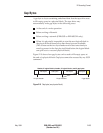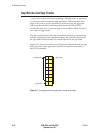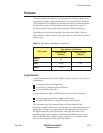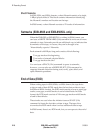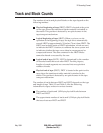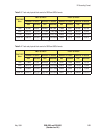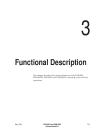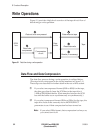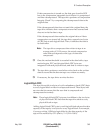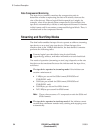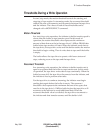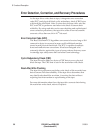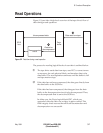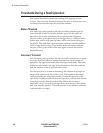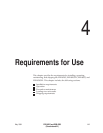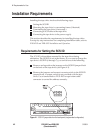If data compression is turned on, the data goes from the SCSI
bus to the compression integrated circuit where it is compressed
and then decompressed. The tape drive performs a Compression
Integrity Check™ by comparing the decompressed data to the
original data.
If the decompressed data does not match the original data, the
tape drive indicates that a compression error has occurred and
does not write the data to tape.
If the decompressed data matches the original data or if data
compression was turned off, the tape drive appends two bytes
of CRC data to each logical block. Then, it transfers the data to
its data buffer.
Note: The tape drive compresses data written to tape at an
average ratio of 2:1. However, the actual compression
ratio achieved depends on the type of data to be
compressed.
® Once the motion threshold is exceeded in the data buffer, tape
motion begins, ECC and physical-block CRC bytes are
integrated with each physical block, and data is written to tape.
¯ The tape drive performs a read-after-write check on the written
data to ensure that the data on tape was written accurately.
° If necessary, the tape drive rewrites the data.
Logical Block CRC
The tape drive adds two bytes of cyclic redundancy check (CRC) data
to every logical block written in compressed format. These bytes add
an extra check to ensure that the user data is compressed and
decompressed accurately.
Note: These logical block CRC bytes are in addition to the two bytes
of physical block CRC data that the tape drive adds to every
physical block on tape.
Adding logical block CRC bytes to each logical block reduces the data
capacity of the tape by two bytes for every logical block. For example,
if you are writing 1,024-byte logical blocks, the data capacity of the
tape will be reduced by 0.2% (that is, 2 ÷ 1,024 × 100%).
May 1994 EXB-8205 and EXB-8505 3-3
(Standard and XL)
3 Functional Description



